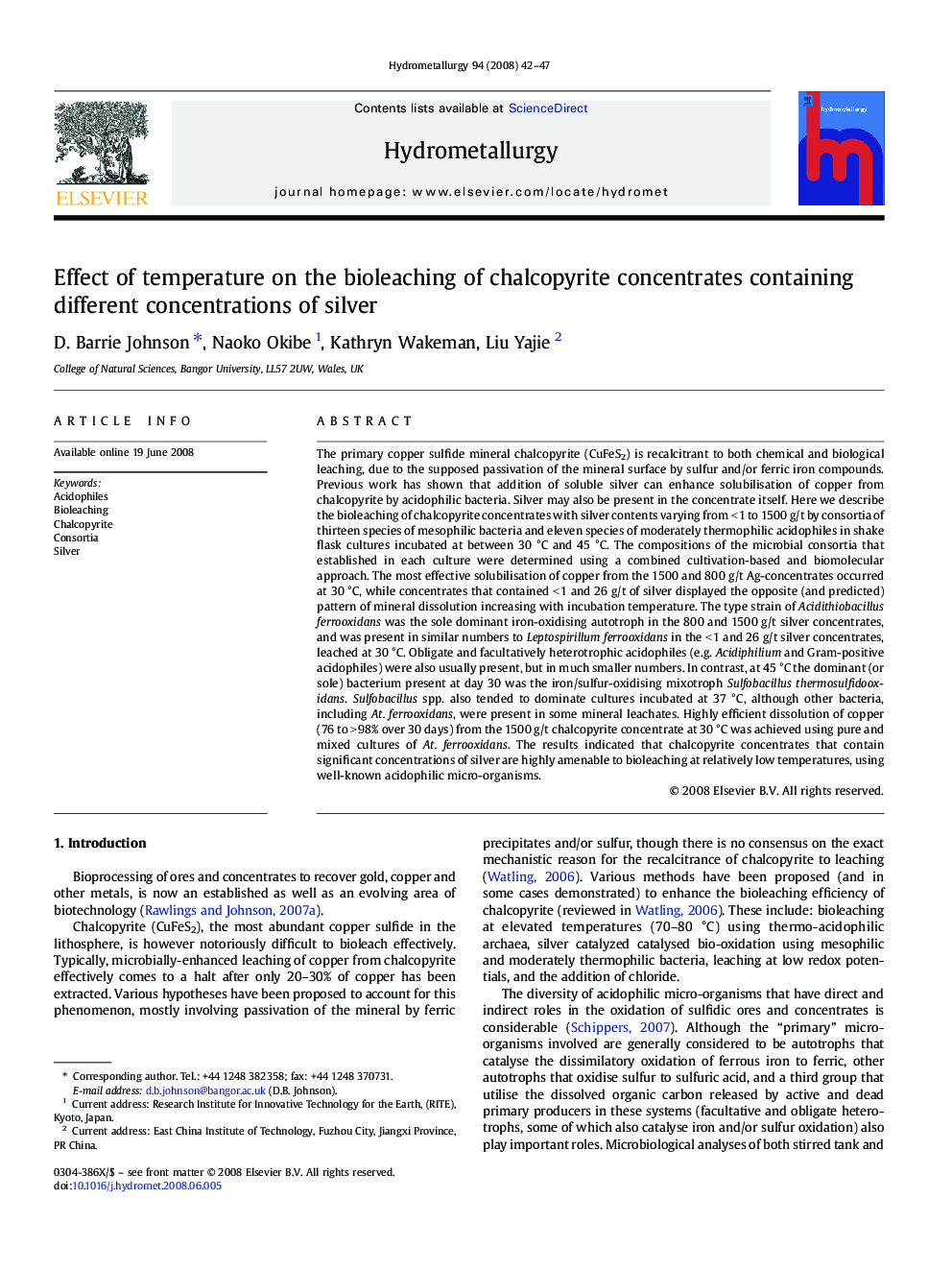| Article ID | Journal | Published Year | Pages | File Type |
|---|---|---|---|---|
| 213214 | Hydrometallurgy | 2008 | 6 Pages |
The primary copper sulfide mineral chalcopyrite (CuFeS2) is recalcitrant to both chemical and biological leaching, due to the supposed passivation of the mineral surface by sulfur and/or ferric iron compounds. Previous work has shown that addition of soluble silver can enhance solubilisation of copper from chalcopyrite by acidophilic bacteria. Silver may also be present in the concentrate itself. Here we describe the bioleaching of chalcopyrite concentrates with silver contents varying from < 1 to 1500 g/t by consortia of thirteen species of mesophilic bacteria and eleven species of moderately thermophilic acidophiles in shake flask cultures incubated at between 30 °C and 45 °C. The compositions of the microbial consortia that established in each culture were determined using a combined cultivation-based and biomolecular approach. The most effective solubilisation of copper from the 1500 and 800 g/t Ag-concentrates occurred at 30 °C, while concentrates that contained < 1 and 26 g/t of silver displayed the opposite (and predicted) pattern of mineral dissolution increasing with incubation temperature. The type strain of Acidithiobacillus ferrooxidans was the sole dominant iron-oxidising autotroph in the 800 and 1500 g/t silver concentrates, and was present in similar numbers to Leptospirillum ferrooxidans in the < 1 and 26 g/t silver concentrates, leached at 30 °C. Obligate and facultatively heterotrophic acidophiles (e.g. Acidiphilium and Gram-positive acidophiles) were also usually present, but in much smaller numbers. In contrast, at 45 °C the dominant (or sole) bacterium present at day 30 was the iron/sulfur-oxidising mixotroph Sulfobacillus thermosulfidooxidans. Sulfobacillus spp. also tended to dominate cultures incubated at 37 °C, although other bacteria, including At. ferrooxidans, were present in some mineral leachates. Highly efficient dissolution of copper (76 to > 98% over 30 days) from the 1500 g/t chalcopyrite concentrate at 30 °C was achieved using pure and mixed cultures of At. ferrooxidans. The results indicated that chalcopyrite concentrates that contain significant concentrations of silver are highly amenable to bioleaching at relatively low temperatures, using well-known acidophilic micro-organisms.
